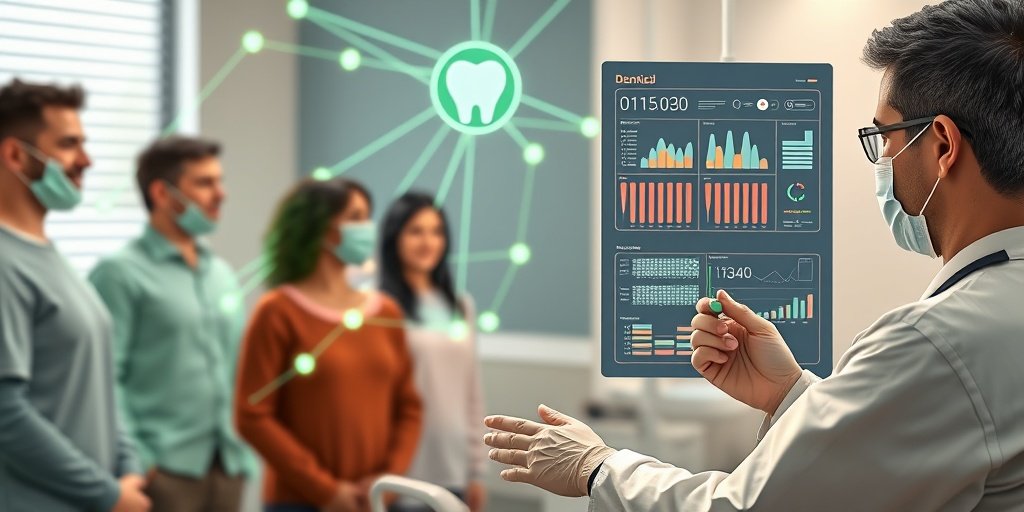⚡ Quick Summary
This longitudinal study from Southern Brazil utilized machine learning to predict negative self-rated oral health (SROH) among adults, analyzing data from 3,461 participants. The best-performing model, TabPFN, achieved an AUC of 0.715, highlighting the potential for targeted health strategies.
🔍 Key Details
- 📊 Dataset: 3,461 adults from Pelotas, Southern Brazil
- 🧩 Features used: 46 sociodemographic, behavioral, general, and oral health characteristics
- ⚙️ Technology: Five machine learning algorithms including Random Forest, LightGBM, CatBoost, XGBoost, and TabPFN
- 🏆 Performance: AUC-ROC scores ranged from 0.671 to 0.715
🔑 Key Takeaways
- 📊 16.6% of participants reported negative self-rated oral health.
- 🤖 TabPFN outperformed other models with an AUC of 0.715.
- 💡 Key predictors included socioeconomic status, dental service type, age, anxiety levels, and life satisfaction.
- 🔍 Shapley values were used to assess the contribution of each predictor.
- 🌍 Findings suggest machine learning can effectively identify at-risk individuals for targeted interventions.
- 🛠️ Further refinement of models is necessary for practical real-world application.

📚 Background
Oral health is a crucial aspect of overall well-being, yet many individuals struggle with negative self-perceptions regarding their oral health. Traditional assessment methods can be subjective, leading to inconsistent results. The integration of machine learning offers a promising avenue for enhancing the accuracy of oral health assessments, potentially leading to improved health outcomes.
🗒️ Study
Conducted in Pelotas, Southern Brazil, this study aimed to develop and evaluate machine learning models to predict negative self-rated oral health among adults. Data were collected through a longitudinal population-based survey, with a focus on various sociodemographic and health-related characteristics. The analysis utilized Python, dividing the dataset into training and testing subsets to evaluate model performance.
📈 Results
The study found that 571 individuals (16.6%) reported negative self-rated oral health. The machine learning models demonstrated reasonable performance, with AUC-ROC scores ranging from 0.671 to 0.715. Notably, the TabPFN model exhibited the highest performance, indicating its potential utility in identifying individuals at risk of poor oral health.
🌍 Impact and Implications
The findings from this study underscore the potential of machine learning in predicting subjective oral health conditions. By accurately identifying individuals with negative self-rated oral health, healthcare providers can develop targeted strategies to address the needs of at-risk populations. This approach could lead to improved health interventions and better overall health outcomes in the community.
🔮 Conclusion
This study highlights the promising role of machine learning in predicting negative self-rated oral health. While the models demonstrated reasonable performance, further refinement is essential for real-world applicability. The integration of these technologies into healthcare could significantly enhance the identification and support of individuals facing oral health challenges. Continued research in this area is encouraged to unlock the full potential of machine learning in health assessments.
💬 Your comments
What are your thoughts on the use of machine learning in predicting oral health outcomes? We would love to hear your insights! 💬 Leave your comments below or connect with us on social media:
Predicting Negative Self-Rated Oral Health in Adults Using Machine Learning: A Longitudinal Study in Southern Brazil.
Abstract
OBJECTIVE: This study aims to develop and evaluate the performance of machine learning models to predict the occurrence of negative self-rated oral health (SROH) among adults.
METHODS: Data were collected through a longitudinal population-based survey conducted in Pelotas, Southern Brazil. The analysis included 3,461 participants with complete data at both baseline and follow-up. Predictors were collected at baseline and encompassed 46 sociodemographic, behavioral, general, and oral health characteristics. The outcome of interest was negative SROH. Data analysis was conducted using Python. The database was divided into training (70%) and testing (30%). The performance of five machine learning algorithms – Random Forest, LightGBM, CatBoost, XGBoost, and TabPFN – was evaluated according to the area under the ROC curve. Additional performance metrics included accuracy, precision, recall, and F1-score. The contribution of each predictor was assessed using Shapley values.
RESULTS: Negative self-rated oral health was reported by 571 individuals (16.6%). The models achieved a performance between 0.671 to 0.715 according to the AUC-ROC, with TabPFN demonstrating the best performance. The most important predictors according to Shapley values were ABEP index scores (socioeconomic indicator), type of dental service used, age, General Anxiety Disorder (GAD-7) scores, and overall life satisfaction.
CONCLUSIONS: The machine learning models developed in this study demonstrated a reasonable performance in identifying individuals with negative self-rated oral health. However, they require further refinement to ensure practical applicability in real-world settings, considering their current limitations.
CLINICAL SIGNIFICANCE: Our findings highlighted the potential of using machine learning to predict subjective oral health conditions. This model should be improved to make it feasible for real-world implementation, considering its limitations. The correct identification of individuals with negative self-rated oral health may support the development of targeted strategies focused on these at-risk groups.
Author: [‘Araujo CF’, ‘Delpino FM’, ‘Figueiredo LM’, ‘Filho ADPC’, ‘Nunes BP’, ‘Schuch HS’, ‘Demarco FF’]
Journal: J Dent
Citation: Araujo CF, et al. Predicting Negative Self-Rated Oral Health in Adults Using Machine Learning: A Longitudinal Study in Southern Brazil. Predicting Negative Self-Rated Oral Health in Adults Using Machine Learning: A Longitudinal Study in Southern Brazil. 2025; (unknown volume):106164. doi: 10.1016/j.jdent.2025.106164